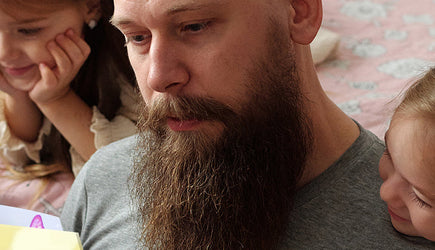10% Off Your First Order
Be first to know about new stories and offers

Kids light up when they hear their own name in a story. Personalizing a tale makes it feel special. It pulls them in. Calls to mind their own world. A name can spark curiosity, joy, and pride all at once. Psychologists link that moment to memory gains and a stronger sense of “I.” Over time, the habit of hearing or seeing their name in a tale lays down neural tracks that boost recall. That kind of brain wiring drives interest in books. In childhood, laying solid bonds with stories matters for later reading habits and self‐worth. Writers and teachers who tap into that power give youngsters a front‐row seat in an adventure they help to shape.
Personal details in a story do more than just grab attention. When a child spots their name on the page, they feel seen. That sense of belonging feeds a deeper link to the characters and plot. One recent report found that kids remember story events up to 30% better when a hero shares their name. Those extra memory gains come from the brain tagging details as more relevant. Story Bug uses this insight by weaving a child’s name into every turn of the tale. Their books make each reader the star. The result is not only fun reading, but also a boost in focus, enjoyment, and later recall. When a child feels this level of connection, they’re far more likely to ask for “just one more chapter.”
Recognizing one’s own name is among the first steps toward literacy. Picture a toddler spotting their name on a cubby at daycare. That simple act links letters with self. It starts a lifelong loop of symbol recognition. Studies show that kids who see their name often in printed form build stronger letter–sound associations. Adding their name to a tale jumps that effect. It makes letters and words feel personal and real. Over time, those small wins lead to bigger gains: better decoding of new words and stronger reading fluency. This stage also ties into self‐identity. When kids read stories where they’re the hero, they learn to place themselves in new roles. That supports social growth and a sense of agency.
Emotions drive attention. When a storybook feels personal, kids react more strongly. Seeing their name can spark giggles, surprise, or delight. Those feelings latch onto the plot and stick. One study noted that children exposed to a rich emotional vocabulary in personalized tales can express their own feelings 30% more effectively (scottsdaleawes.com). By linking names to feelings, a story offers safe practice with empathy. Young readers may cheer when they rescue a friend or feel proud for solving a puzzle. Those emotional cues shape the way they discuss both the story and real‐life events. Over time, they grow more skilled at reading both text and social signals in others.
Stories are social tools. They share norms, lessons, and humor. When a child spots a name like theirs on the page, they relate on a personal level. That bond helps them test ideas about friendship, sharing, and right from wrong. For example, a character named “Mia” who learns to cooperate with classmates shows a child that Mia’s choices apply to them too. Story Bug takes this further by weaving diverse backgrounds and abilities into its plots. Their inclusive approach helps kids grasp different perspectives and build real‐world empathy. Personal names in a custom storybook become mini bridges to social norms that kids can explore in an engaging, low‐pressure setting.

Kids learn language by spotting patterns in words, sounds, and rhythms. Seeing their own name in a story offers a familiar anchor in a sea of new terms. That boost helps with vocabulary and grammar. For instance, a Kenyan study noted that kids whose dads read to them are four times more likely to read on their own and twice as likely to recognize new words (pmc.ncbi.nlm.nih.gov). Tying in a child’s name takes that effect up another notch. The brain treats familiar words as keystones. From there, it can map out surrounding language more easily. Over time, children who see their names in many contexts develop stronger reading fluency and a bigger word bank.
Parents and educators can weave personalization into bedtime or classroom routines. Start by inserting the child’s name into the hero’s role. Add details like hometown, favorite color, or pet’s name. That small tweak makes the story instantly more engaging. Use open‐ended prompts: “What would [Child’s Name] do next?” That invites kids to shape the plot. The gains show up in multiple ways. Personalized stories boost focus, as kids track themselves through the adventure. They also spark writing interest. Many children want to pen their own stories once they see their name in print. Finally, tailored stories build family ties. Shared laughter and surprise strengthen bonds and foster a love of reading.
Researchers have popped into classrooms to test name personalization. One experiment replaced protagonist names with each student’s own. The result? A 25% rise in creative problem‐solving scores over three months (scottsdaleawes.com). Another team tracked memory recall and found that kids remembered plot events best when the hero shared their name. Studies on family storytelling also link name use to stronger bonds and higher self-worth. All this points to a simple fact: making kids the hero sparks real gains in thinking, reading, and emotion.
A name in a story does more than amuse. It shapes memory, feeling, and identity. As kids follow their own hero’s journey, they form reading habits that can last a lifetime. Personalized storybooks for kids build social skills, language fluency, and creative thought. Story Bug’s mission captures that magic by placing each child at the center of a diverse, inclusive world. Their books turn reading into an act of self‐expression and discovery. At the end of the day, a child who sees their name in print learns they matter. They learn that stories aren’t just something to watch—they’re something they live.
Ready to spark your child’s love of reading? Explore our full collection of personalized storybooks for every age, interest, and occasion. From bedtime adventures to holiday magic, each book puts your child in the spotlight. Discover the joy of storytelling made just for them at Story Bug.
 Personalized Storybooks | Psychology Behind Personal Names
Children Seeing Their Name in a Story Kids light up when they hear their own name in a story. Personalizing a tale makes it feel special. It pulls them in. Calls to mind their own world. A name can spark...
July 3, 2025
Personalized Storybooks | Psychology Behind Personal Names
Children Seeing Their Name in a Story Kids light up when they hear their own name in a story. Personalizing a tale makes it feel special. It pulls them in. Calls to mind their own world. A name can spark...
July 3, 2025
 Personalized Storybooks vs Traditional Storybooks: A Deep Dive
Reading has long been a cornerstone of early learning. Parents and educators debate which format best supports cognitive growth and literacy skills. Two clear contenders are traditional storybooks and personalized storybooks...
June 27, 2025
Personalized Storybooks vs Traditional Storybooks: A Deep Dive
Reading has long been a cornerstone of early learning. Parents and educators debate which format best supports cognitive growth and literacy skills. Two clear contenders are traditional storybooks and personalized storybooks...
June 27, 2025
 Easter Memories That Bloom Forever: Beyond the Chocolate Eggs
Easter is a season of sweet treats, joyful gatherings, and the delightful thrill of egg hunts. But what if you could capture the magic of this special time..
March 3, 2025
Easter Memories That Bloom Forever: Beyond the Chocolate Eggs
Easter is a season of sweet treats, joyful gatherings, and the delightful thrill of egg hunts. But what if you could capture the magic of this special time..
March 3, 2025